Australia is very lucky to be home to a plethora of unique and fascinating fauna, but with so many native species, it’s easy to see how an animal encounter could become dangerous. It won’t be news to you that we have a global reputation as being the ‘deadliest’ country on earth due to our incredible yet dangerous population of varied animals. Although a lot of the international claims border on the ridiculous, like being eaten whole by a funnel web spider, there is a reason to approach certain areas with caution and respect.
Colliding with animals on the open road does happen often in Aus and most victims are kangaroos and wallabies. Chances of an animal strike are greater at dawn and dusk, when many creatures are more active, as well as near permanent water sources.
Most importantly, if you find yourself barrelling toward a critter, do not swerve. The most common cause of fatalities related to animal incidents on the road happen when drivers swerve to avoid collision and subsequently lose control of their vehicle. Therefore, the safest option, despite being unpleasant, is to just stay on course — particularly if you’re towing a heavy rig. No matter how attentive you are on the road, it’s impossible to predict the exact moment a roo might bound across your path. Therefore, it’s wise to have a bull bar fitted to reduce the danger to you and your passengers should a collision take place. You should also consider some strong spotlights if you drive at night.
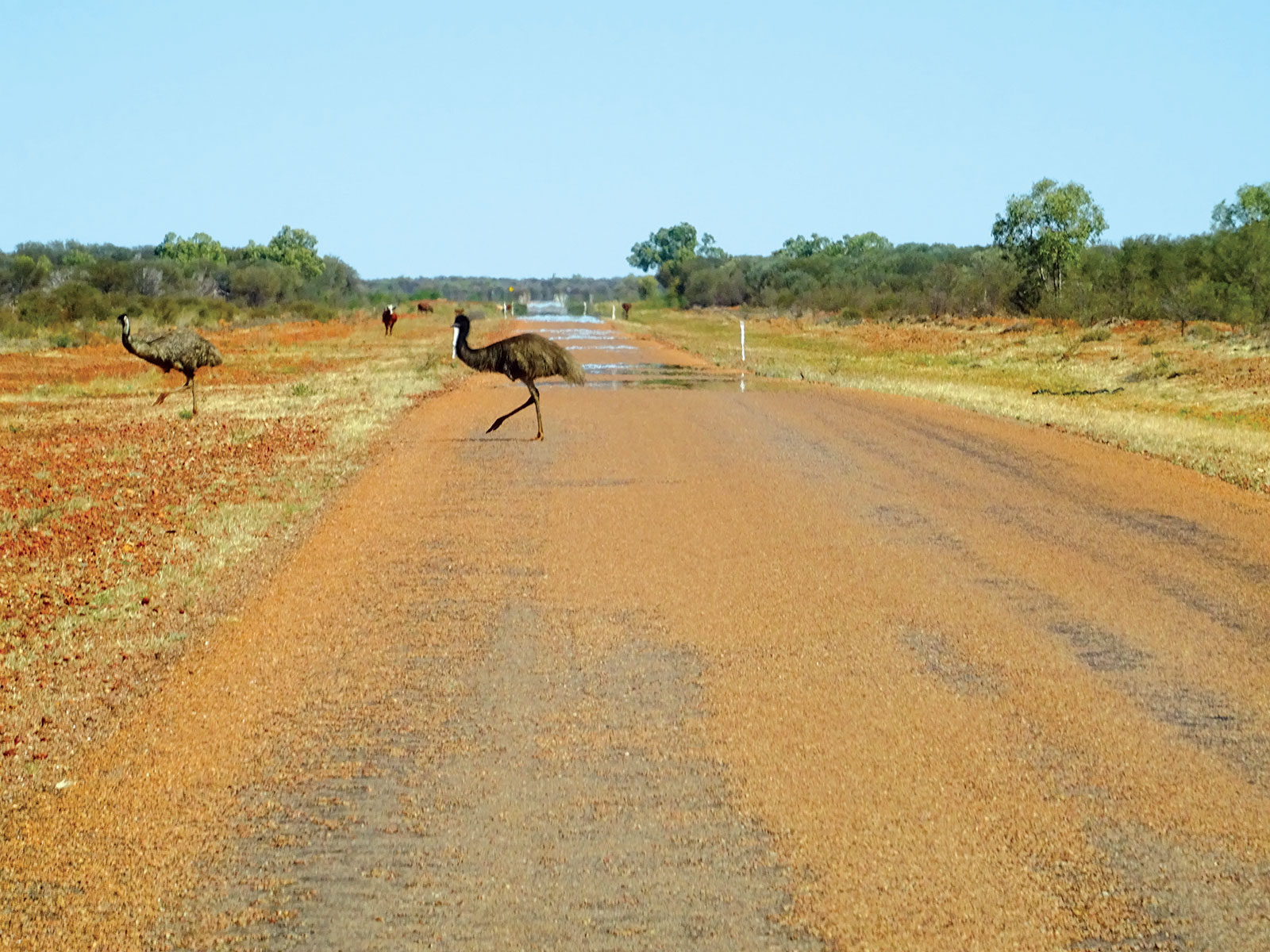


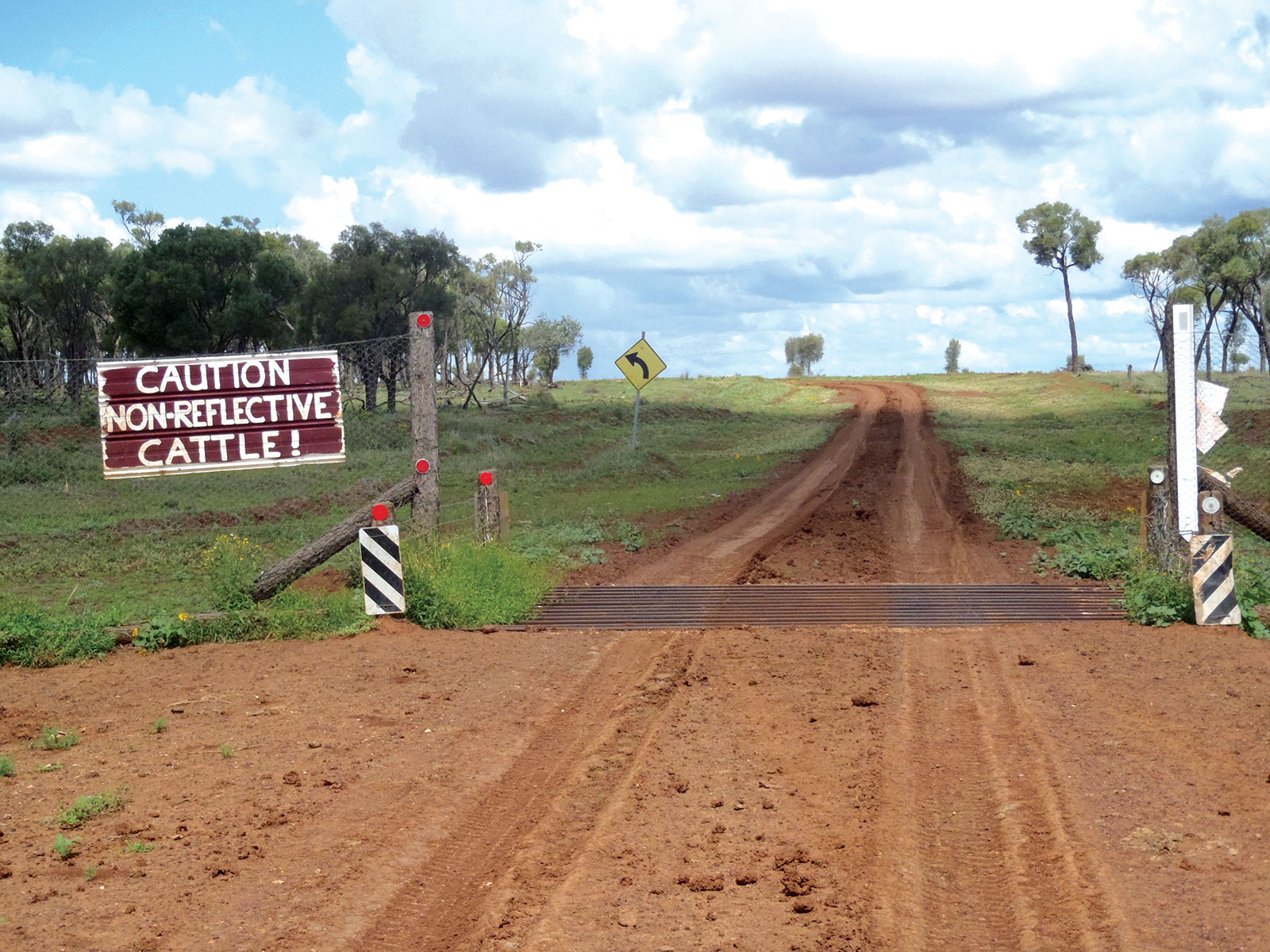
Beef on your grill
There is also a chance you’ll come across a bovine roadblock while travelling. When it comes to right of way and liability, this is a complicated area full of archaic laws and legislations that vary state to state. Unlike a bounding roo, you’re far more likely to spot a slow-moving cow well before it’s up in your grill. Therefore, the standard procedure is to stop and wait for them to get out of the way. Hitting a cow would, obviously, be a harrowing experience for all on board and you might have to deal with a disgruntled farmer too. So, ensure you keep an eye out for ‘give way to stock’ signs that indicate when an area may be used for grazing or moving cattle.
An unfortunate encounter
In the event that you do collide with an animal, it’s vital to know what to do next. If it’s little and still alive, you’re advised to gently pick it up with a towel or blanket, place it in a well-ventilated box and take it to a vet. If it’s too big or you need professional advice on what to do, it’s best to contact the RSPCA National Office on (02) 6282 8300 and stay with it until help arrives. And before you get back into your vehicle, make sure the road is clear — this may mean hauling the beast off the road and about 10m from the edge.
Sharing space with wildlife
If you’re often out in the great outdoors, your chances of encountering some of our unusual Aussie animals is higher. Sighting an animal can be a majestic experience, but it’s important to keep your distance. You should be especially careful if travelling with pets or small children.
Crocs — the only animal in Aus likely to hunt you with a view to kill you. Saltwater or estuarine crocodiles can grow to 5m and are skilled trackers and cunning hunters. They’re usually found along Australia’s northern coast and will travel up streams and rivers until waterfalls or other obstructions halt their inland travels. Since becoming a protected species in 1974, numbers have greatly increased. If you’re camping in crocodile country, avoid any potentially croc-infested waters. Camp further than 50m from any body of water connected to the sea. Never approach or tease a crocodile and avoid boarding small and unstable boats.
Dingoes — although there are domesticated dingoes, remember those seen in the wild are very much wild and can be dangerous. Never feed wild dingoes and if you know they’re nearby you should walk normally and avoid running as it can elicit an aggressive reaction. They tend to avoid interactions with humans; however, a hungry, desperate dingo can be emboldened. Don’t mistake this confidence for domesticity.
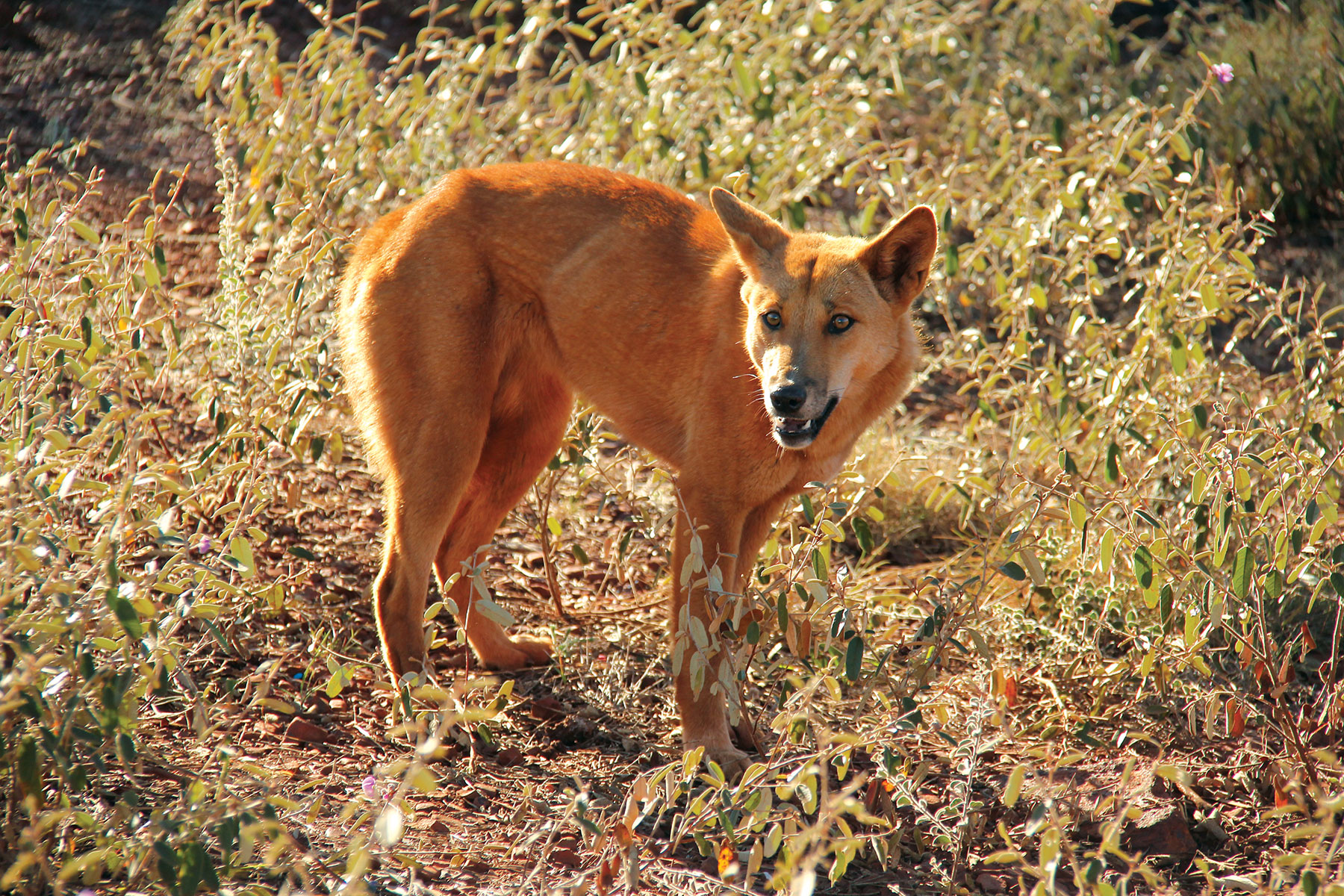
Goannas — they come in plenty of shapes and sizes and can be a remarkable sight if you’re never seen one before. Unfortunately, in some areas they can be pests around campgrounds. It’s not often a goanna attacks a human out of the blue but if there’s food involved, they can become quite boisterous. It’s best to keep a good distance and make sure you don’t leave scraps lying around camp.

Kangaroos — roos are likely to be content going about their business while you go about yours. If sneaking a pic, be careful not to get too close — chances are it’ll spook and hop away but like any animal, it can become dangerous when threatened. If a roo becomes aggressive, keep it at a distance (try to stay behind a tree or fence), avoid eye contact and back always slowly but do not turn your back. You can also give a short deep cough to indicate you’re not a threat.
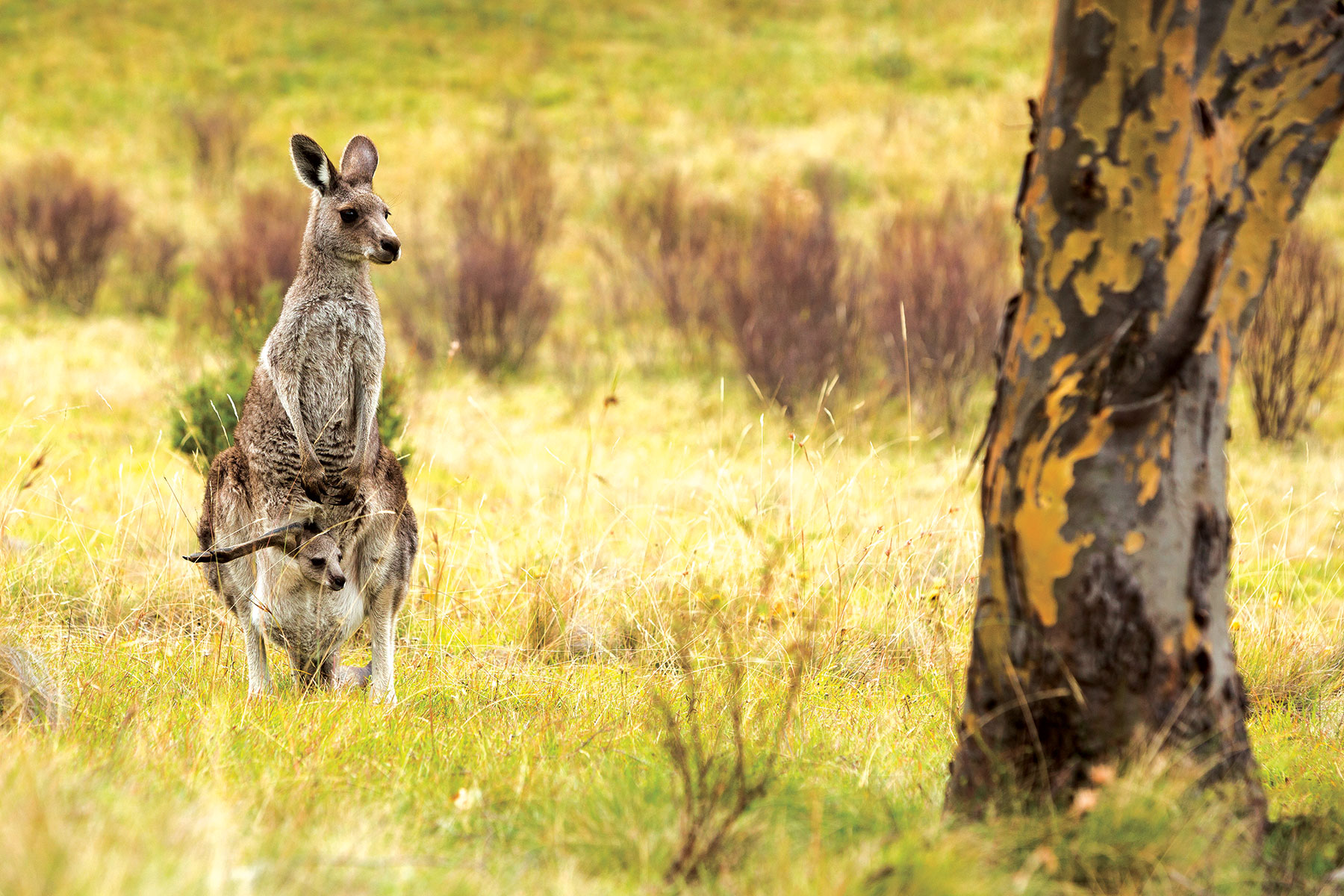
Snakes — many are not particularly dangerous to people, but there are some exceptions. Usually, snakes prefer to avoid human contact though they will strike out in defence if they feel threatened. They’re generally scared of humans, so the trick is to make a lot of noise when in their territory and move slowly to give them time to escape. Wear boots and long pants when you’re in busy areas and be sure to keep doors and tent flaps closed.
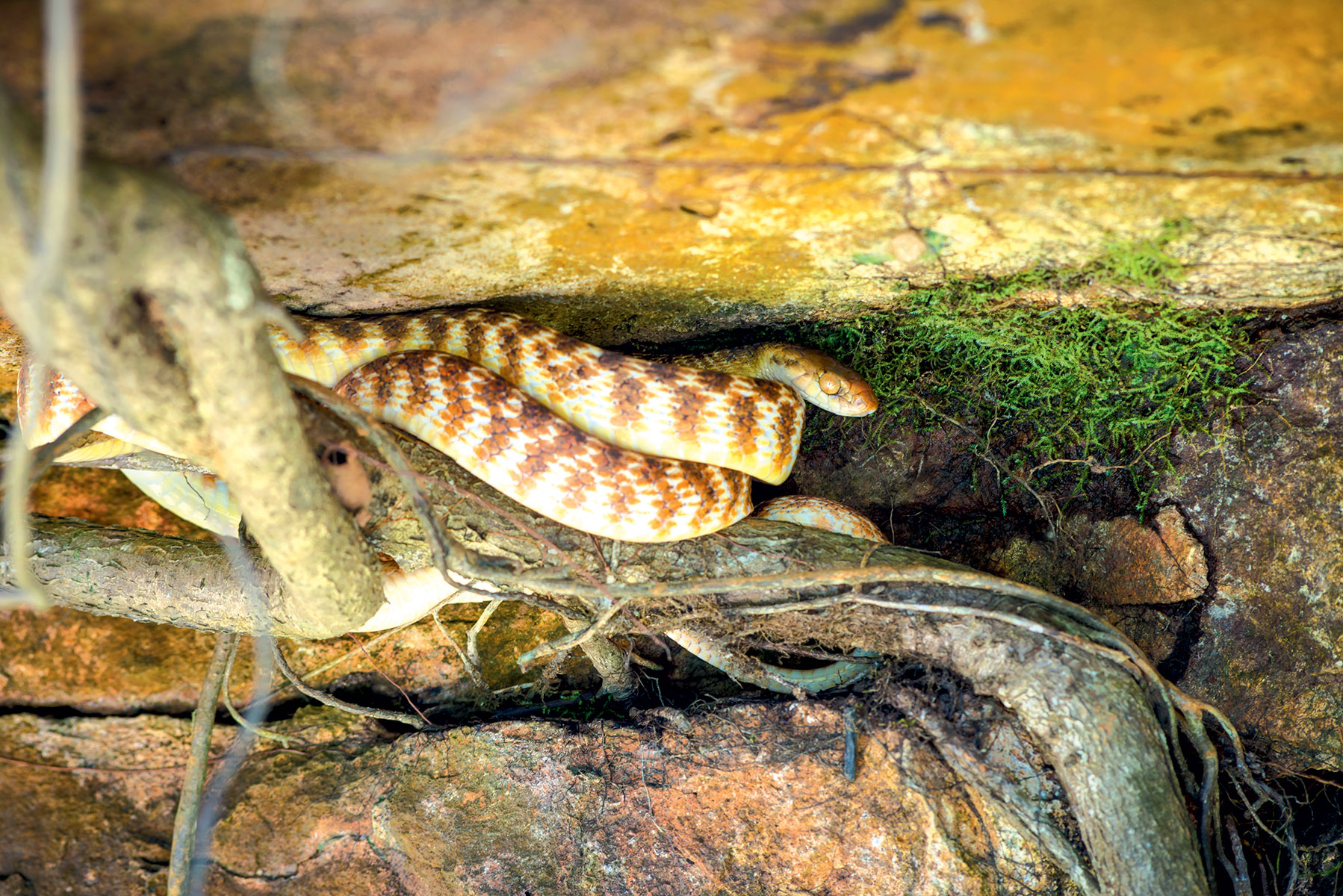
Don’t feed the locals
One of the most important things to remember when it comes to wild animals is that you should never feed them. Food provided from humans can cause animals to become aggressive, emboldened towards humans and will keep them coming with an expectation. Always keep food stores secure in containers, no bags, and make sure rubbish and food scraps are disposed of properly.
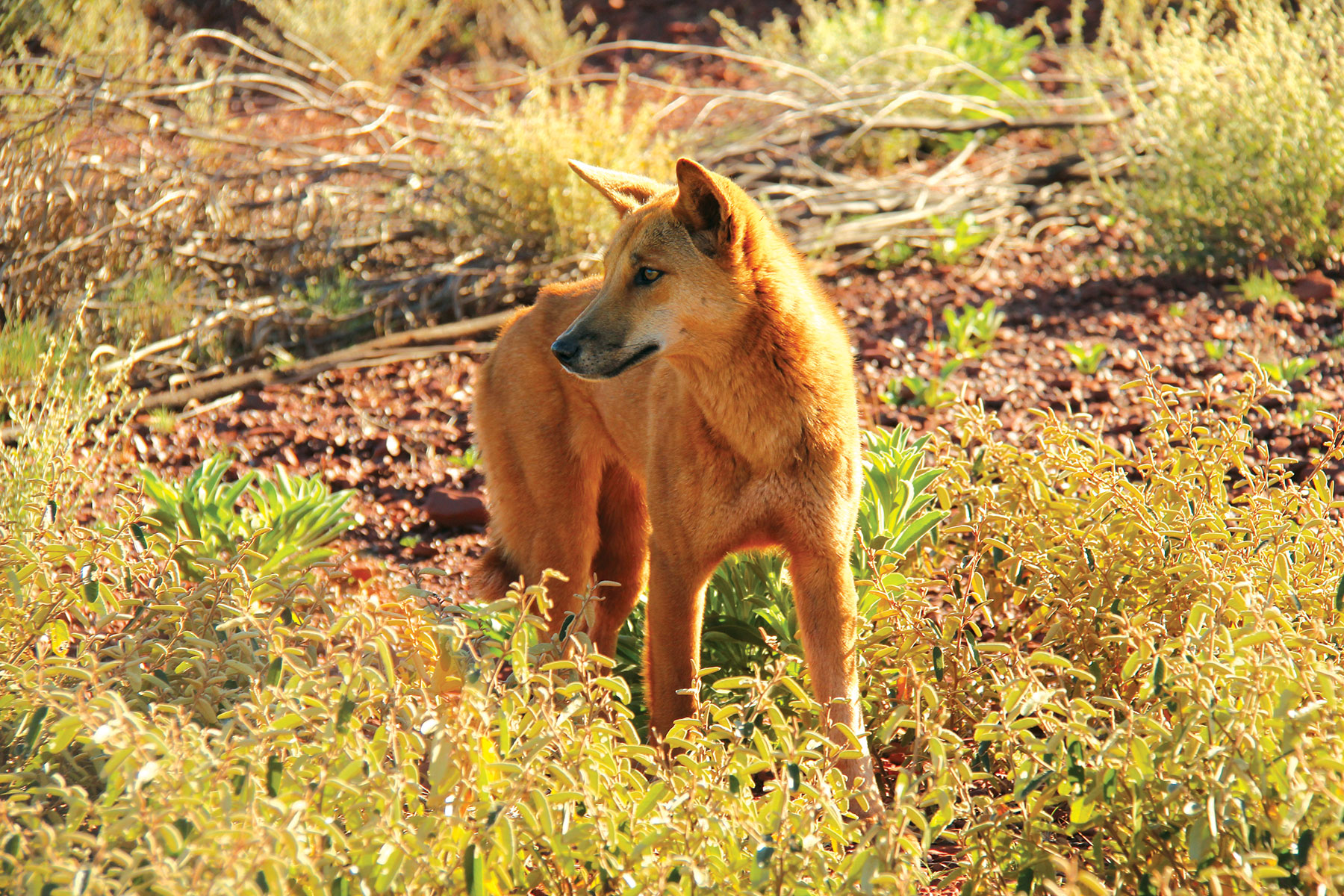
The ones to watch
Unlike some of the animals mentioned above, the following contain toxic venom and should never be approached.
Desert death adder — this venomous snake can be found amongst spinifex, sand dunes and rocky outcrops as well as gibber deserts and coastal dunes throughout the arid and semiarid areas of WA, NT and SA.
Mulga snake (King brown) — although not considered as aggressive as other browns, the Mulga snake (Pseusonaja mengdeni) is still one of the Australia’s 10 most venomous snakes.
Western brown snake (Gwardar) — usually found in Australia’s drier regions. It is not only venomous but has several different colour morphs.
Spiders — they are common throughout Australia, but bites are not. The redback spider (Lactrodectus hasselti) is generally found under rocks and logs in drier bushland. The rarely seen trapdoor spider can inflict a very painful bite that may be toxic. These dangerous arachnids are ground dwellers, so avoid bare feet when outdoors — especially at night. A large huntsman spider may bite when provoked, but their bites are not harmful. Other spiders are generally too small to be of any consequence to humans.
THE NEXT STEP
Are you ready to experience the freedom of the open road? Don't wait - Find your dream getaway now!




